
“I’m not interested in the stereotype of a place, but in the essence of it as seen through one’s own experience.”
In my mind, one of the greatest of travel distractions is the snapshot. Please note that I didn’t say “camera,” but “snapshot.” Nothing lessens my enjoyment of a place faster and more surely than a carload of bedraggled tourists piling out, clicking away, chattering in frenzied excitement – yet paying almost no attention to the place at all, because they’ve made their snapshot. They’ve documentary proof of their visit to the place. And then they pile back into the vehicle, and it’s off again to the next place.
Snapshots aren’t inherently bad, but I prefer to experience a place slowly, which is why I have a tendency to do so on foot or by bicycle, unrushed. Exploring, sketchbook in hand, also tends to encourage a certain investigation of the essence of place rather than a more facile stereotype or caricature. My purpose is to communicate that essence as it is seen through my own experience, and in doing so to hopefully also communicate some overlooked truth. I will always leave out details or elements in my sketches that might divert attention; too much detail can, strangely enough, create a drawing that distorts or misrepresents the experience of one’s journey.
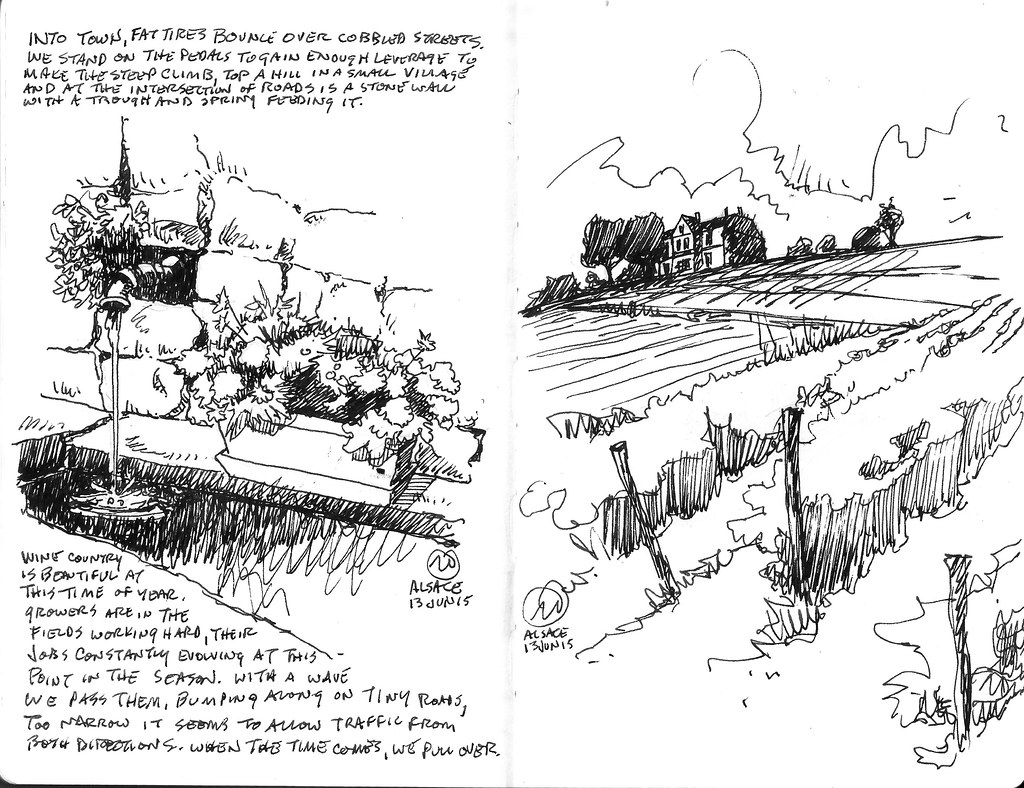
And yet, sometimes I find that by focusing on details rather than on the big picture, one can create a worthwhile visual conversation about a small, charming element.
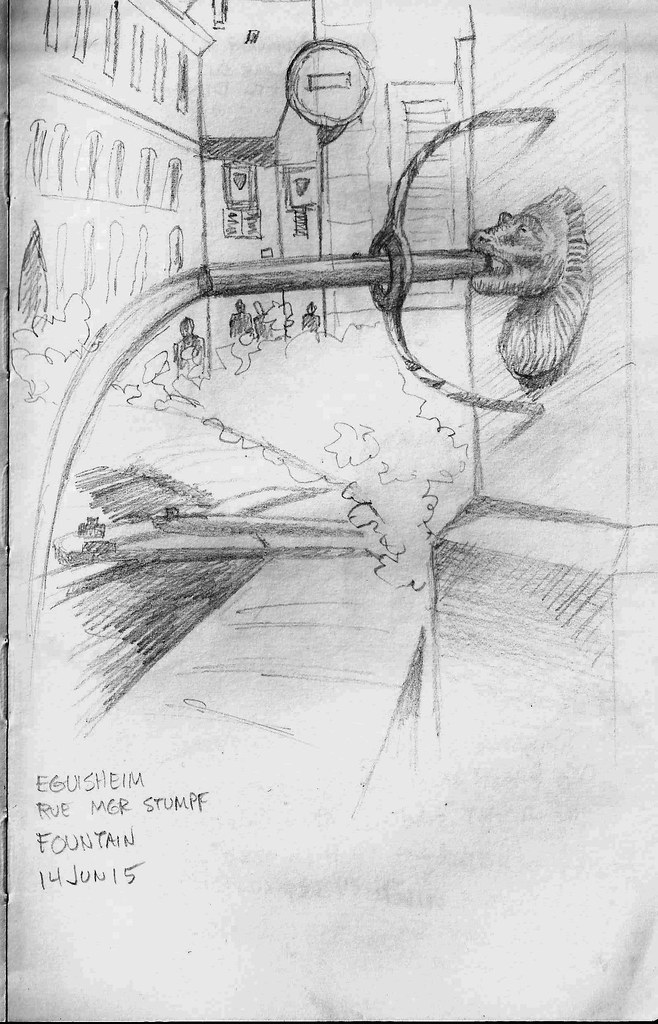
Normally I will only use graphite to rough in quick gestural marks and then rely upon my Lamy Safari pen to lay down the important lines. But on occasion, as in the example above, I discover I’ve forgotten to refill the reservoir and I’m entirely without ink!

Personally, I find more satisfaction keeping the line work simple and gestural rather than going into great detail with rendering. I've heard this described as Zen-like. Perhaps. I rather enjoy the challenge of communicating a certain "believability" with a minimum of lines.
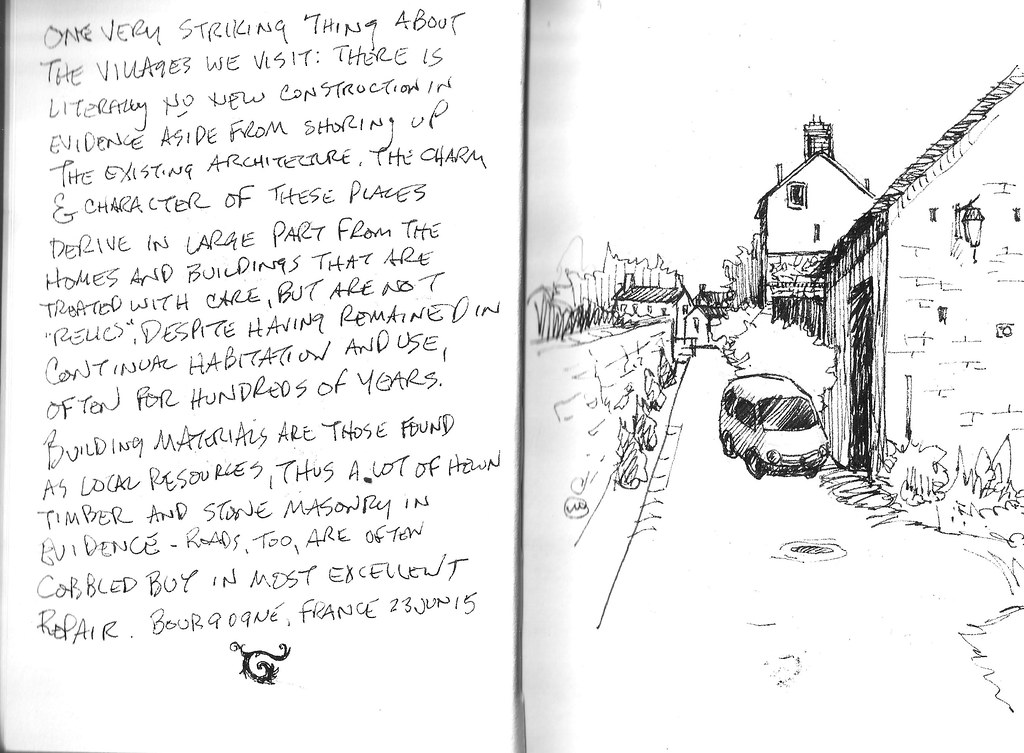
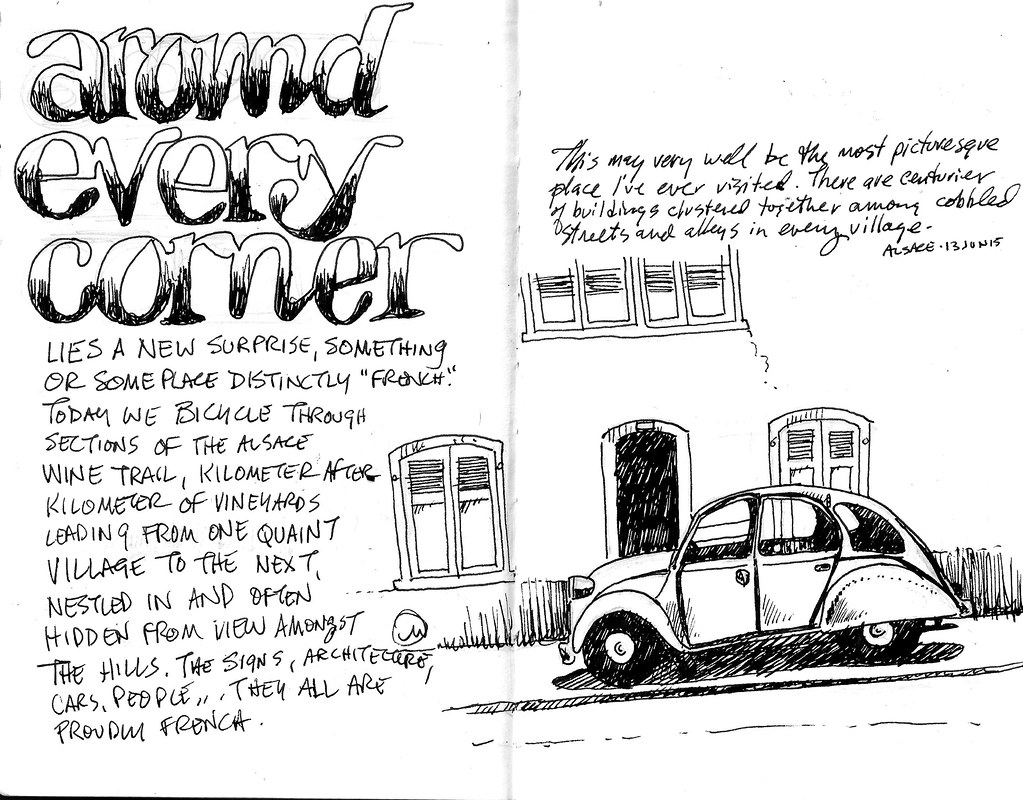
One nice thing about buildings in the French villages we visited is their distinctive architectural look and shape. Once one has identified the key forms, keeping the calligraphy of the lines simple and believable comes more naturally. It makes me happy to reach the state where the sketch isn’t “trying too hard” – it just is.
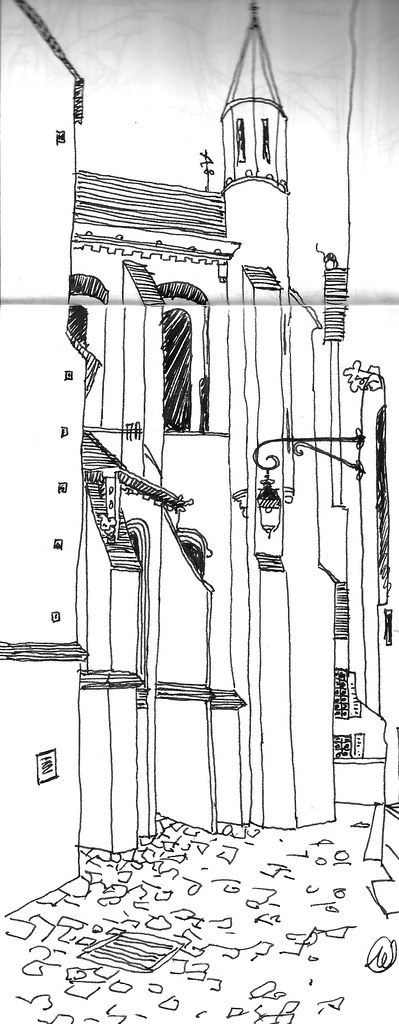

No comments:
Post a Comment